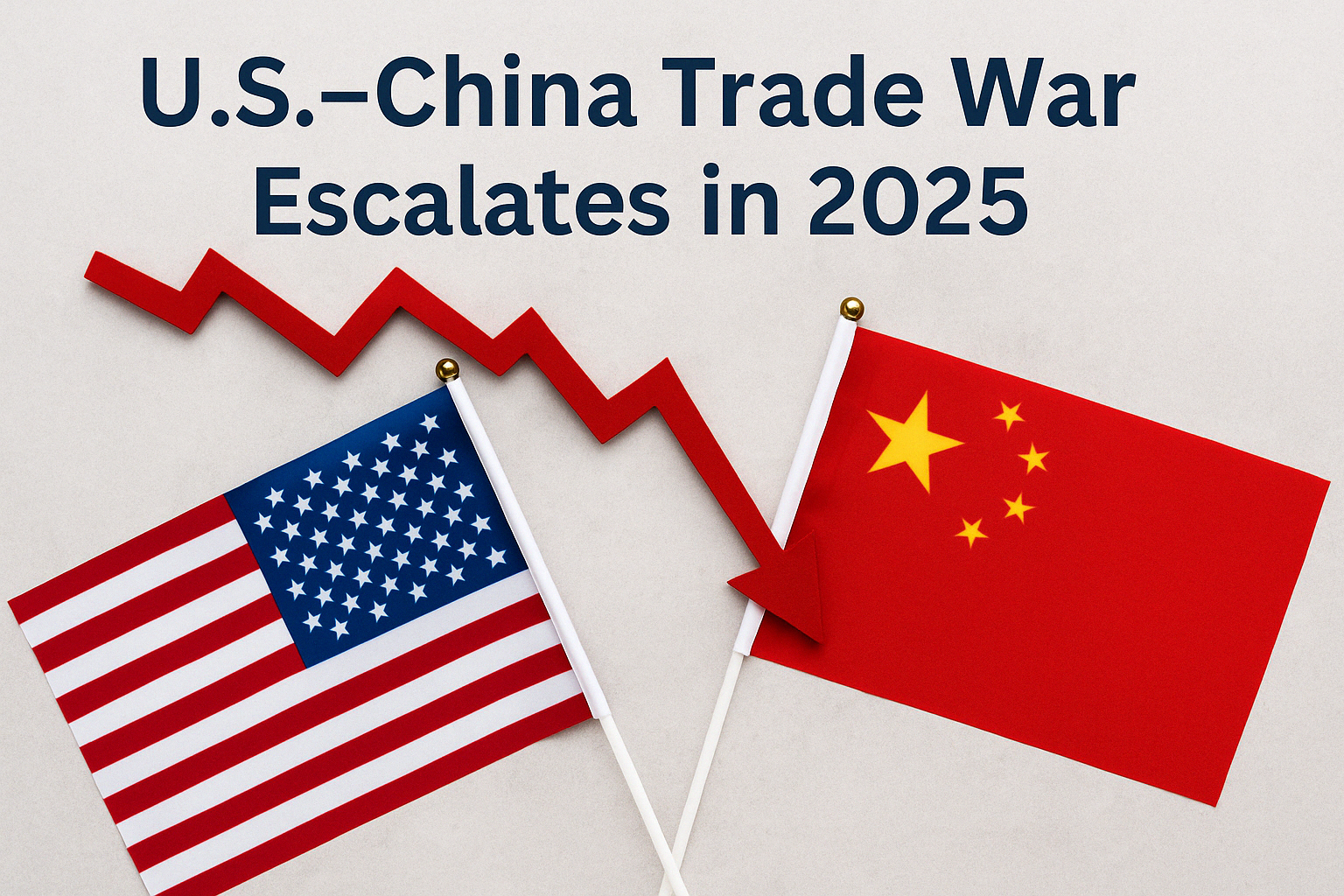
The trade tensions between the United States and China have reached a boiling point in April 2025, with both superpowers unleashing aggressive tariff measures that have spooked global markets and reignited fears of a global economic slowdown.
🔥 What Happened?
President Donald Trump raised tariffs on Chinese imports to a staggering 245% on selected goods, in what the White House described as a decisive move to “protect American industry and jobs”. The average tariff across Chinese imports now stands at 145%, marking one of the steepest hikes in recent trade history.
In swift retaliation, China responded with its own tariff wall — imposing 125% duties on a wide range of US goods and suspending the export of rare earth metals, a critical component in defense, electronics, and electric vehicle sectors.
💥 Key Developments
- US Tariff Surge: High tariffs target sectors like electronics, industrial machinery, and consumer goods.
- China’s Response: Not just tariffs — China’s move to halt rare earth exports is seen as a strategic blow to US tech and aerospace firms.
- Nvidia, Boeing Hit: US tech companies like Nvidia (due to AI chip restrictions) and aerospace firms like Boeing are facing ripple effects.
- Stock Market Volatility: Global markets reacted sharply. Investors moved into safe havens like gold, which soared past $3,300/oz.
🌏 Global Economic Impact
- Inflation & Recession Worries: The double-barreled tariff escalation could lead to higher import costs, supply chain disruptions, and inflationary pressures globally.
- China’s GDP: Despite a reported 5.4% growth in Q1 2025, analysts are questioning the sustainability of this pace amid rising trade pressure.
🧭 Diplomacy & Strategy
- China Appoints Li Chenggang as its new chief trade negotiator, signaling a more calculated and possibly combative stance.
- Trump’s Statement: “The ball is in China’s court.” While the US has paused new tariffs on other nations, the focus remains firmly on Beijing.
📌 Why It Matters
This isn’t just a war of numbers—it’s a full-blown economic chess match with technology dominance, national security, and geopolitical influence at stake.
The US-China trade war of 2025 could reshape global supply chains, accelerate diversification (“China+1” strategies), and create long-term uncertainty for industries that rely heavily on cross-border collaboration.
Source: Based on reports from India Today, News18, Reuters, AP News, and The Guardian (April 2025)




